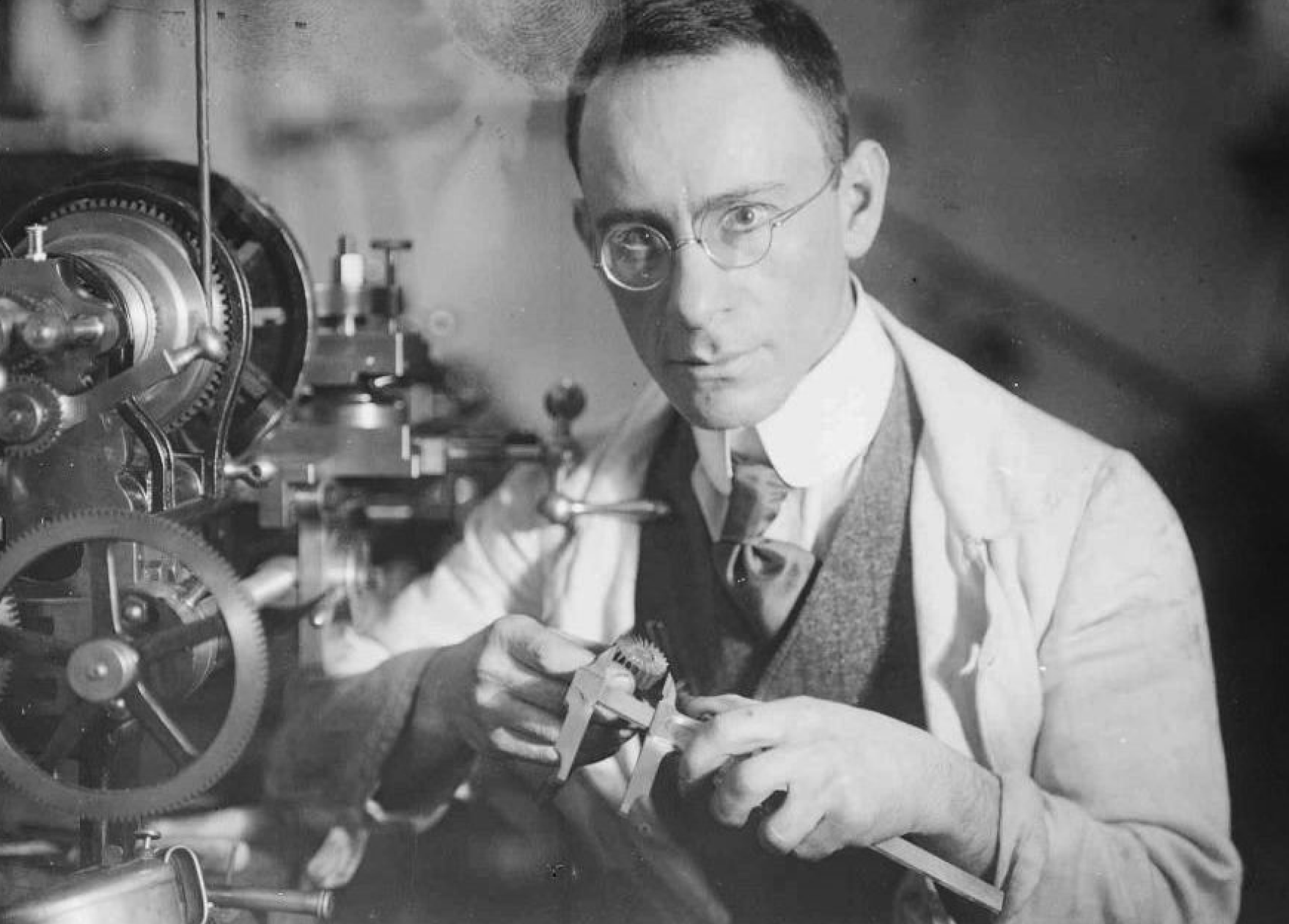The Evolution of Document Processing: From OCR to Intelligent Agents
Picture a world where machines read handwriting better than humans, where data is extracted from documents in the blink of an eye, and where unstructured information becomes a wellspring of business insights. This isn't science fiction but the true story of Intelligent Document Processing (IDP) evolving with the power of AI agents.

Today, together with Sergey Jermakov, COO of Graip.AI, we will explore how once a dream of the smartest becomes everyday life and will trace the evolution of document processing.

Understanding the Origins: OCR Technology
Imagine you're at a conference, and someone hands you their business card.
Instead of manually typing the contact information into your phone, you use Google
Lens. You simply point your phone's camera at the business card, and voila! The
text is magically converted into digital form. This not only saves you time but also
reduces the chances of manual input errors. To make this happen Google Lens employs
Optical Character Recognition technology.
OCR has a fascinating history that traces back to 1914 when Emanuel Goldberg
introduced a groundbreaking invention. He devised a machine capable of reading
characters and translating them into telegraph code. This innovation utilized movie
projector technology to handle microfilm and employed a photoelectric cell for
pattern recognition to identify the correct records.
Goldberg's dedication to enhancing OCR technology persisted over the years,
leading to the development of what can be considered the world's inaugural
search engine. This pioneering device utilized OCR to comb through microfilm
archives, searching for specific patterns of characters. Remarkably, the U.S. patent
for this "statistical machine" eventually found its way into the hands of
IBM, signifying the enduring impact of Goldberg's pioneering work in the field
of OCR.
OCR marked a groundbreaking advancement, enabling machines to recognize printed
characters and transform them into machine-encoded text. This innovation laid the
foundation for digitizing written content and automating fundamental data entry
tasks.

Nowadays, OCR technology is versatile and widely employed in various applications, from banking and finance to education and healthcare. Its ability to convert printed text into machine-encoded characters has simplified numerous aspects of our lives, making it an integral part of the digital transformation we experience today.
However, OCR, despite its significance, grappled with certain limitations. While excelling with structured documents sporting consistent formats, OCR struggled when faced with handwritten text and unstructured data.
Robotic Process Automation: Automating Routine Tasks
RPA Market Size
Another pivotal moment in the journey of automation occurred in the early 2000s with
the emergence of Robotic Process Automation. RPA brought forth the idea of software
robots, often referred to as "bots," designed to mimic human interactions
with computer systems. The primary goal of RPA was to automate tasks characterized by
repetition and adherence to predefined rules, spanning across diverse business
functions.
Much like their human counterparts, software robots are able to comprehend on-screen
information, execute precise keystrokes, navigate through complex systems, recognize
and extract data, and perform a diverse array of predefined tasks. The key distinction
lies in their efficiency and consistency; software robots outperform humans in terms
of speed and reliability, all while operating without the need for breaks or
refreshment pauses.

RPA adoption is rapidly increasing across organizations of all sizes to generate
greater returns on investment and boost productivity. The robotic process automation
market size was valued at USD 10.01 billion in 2022. According to Fortune Business
Insights, the global market for robotic process automation is projected to grow from
USD 13.86 billion in 2023 to USD 50.50 billion in 2030.
Amid this exponential growth in the robotic process automation market, it's
fascinating to see how RPA is creating tangible benefits in various industries. For
example, in the healthcare industry , RPA is significantly enhancing patient care. RPA bots handle appointment scheduling,
claims processing, and even patient data management. This not only reduces
administrative burdens but also minimizes errors, leading to improved healthcare
outcomes.

Intelligent Document Processing: The Paradigm Shift
Unlike OCR and traditional RPA, IDP broke free from the confines of structured data.
It possessed the remarkable ability to comprehend and extract information from
unstructured documents such as invoices, contracts, emails, and more. IDP systems went
beyond mere automation; they learned from data, adapted to evolving document layouts,
and continually improved their accuracy through machine learning. This adaptability
and learning capability were game-changers, setting IDP apart from its predecessors.
The true transformation came in the late 2010s, when Artificial Intelligence and
automation converged to give birth to Intelligent Document Processing. IDP harnessed
advanced technologies like Machine Learning (ML) and Natural Language Processing (NLP)
to intelligently process documents, regardless of their format or complexity.
The Power of IDP Today
According to a report by MarketsandMarkets, the IDP market value is projected to reach
$5.2 billion by 2027, with a compound annual growth rate (CAGR) of 37.5%. As we
witness the rapid growth in the adoption of IDP and the impressive market projections,
it's evident that businesses are embracing innovative solutions to address their
evolving needs. However, the success of these solutions doesn't solely depend on
the adoption of IDP.
Emerging technologies, such as AI and ML, have gained significant traction among
leading organizations in today's digital landscape. These organizations are
actively seeking distinctive factors to gain a competitive edge by delivering top-tier
customer experiences that include real-time updates. The focus now revolves around
elevating customer satisfaction through enhanced business productivity and improved
communication channels.
When it comes to data extraction, clients are increasingly demanding better outcomes.
Intelligent Document Processing is emerging as a superior alternative to OCR and RPA . The challenges that arose from manual document handling fueled the demand for
digital solutions, leading to the development of automated tools. The widespread
adoption of IDP aligns with AI's vision of its ubiquitous utilization, as it
addresses numerous pain points faced by working professionals in various industries.

Modern IDP solutions with AI However, OCR, despite its significance, grappled with certain limitations. While excelling with structured documents sporting consistent formats, OCR struggled when faced with handwritten text and unstructured data.
In parallel, the time allocated to document processing has been steadily increasing, while digitization initiatives in these processes lag behind. Meanwhile, customers have come to expect faster and error-free results. Consequently, the demand for IDP solutions has witnessed a substantial uptick.
AI Agents: The Next Step in Intelligent Document Processing
IDP is not the final stage of automation — now, we are entering the next phase with AI agents that can understand, reason, and act on information independently. AI agents use language models to process information intelligently and adapt to different tasks. Unlike traditional OCR or RPA, which rely on fixed rules, AI agents use machine learning to interpret unstructured data, understand context, and make decisions. They can validate, classify, and even cross-check information across different sources, reducing the need for manual input. Another major advantage is their ability to interact with users through natural language. Instead of navigating complex workflows, employees can simply ask an AI agent to find discrepancies in invoices or summarize a contract. These systems can also spot errors, flag compliance risks, and suggest actions based on past data, making them especially useful in finance, healthcare, and legal work. With businesses handling more data than ever, AI agents are quickly becoming a core part of document automation. By combining accuracy, adaptability, and real-time decision-making, they help companies process information faster and with fewer mistakes, freeing up employees for more important work.

The Future of IDP
The future of IDP is all about teamwork – between humans and AI. Instead of competing, the focus is on how AI can enhance what humans do best. By handling repetitive, data-heavy tasks, AI allows people to focus on creativity, big-picture thinking, and making smart, ethical decisions. AI agents are leading the charge. These systems act as intelligent assistants capable of managing complex tasks independently, such as extracting data from emails or PDFs, validating it against business rules, and even updating systems automatically. Continuous Learning with Human-in-the-Loop ensures that AI improves over time. When humans provide feedback by correcting mistakes or refining results, the AI learns and becomes more accurate. Retrieval-Augmented Generation (RAG) is another exciting development. This technology enables AI to pull additional information from external sources, enhancing the accuracy and depth of its insights through cross-referencing and contextual analysis. It’s particularly valuable for tasks like analyzing contracts or financial reports.

Looking ahead, visual language models and intelligent data governance will further strengthen IDP, making it more powerful, secure, and adaptable. The future of IDP is about making technology work smarter for people, not the other way around. When businesses use these tools well, they’ll find better ways to solve problems, make decisions, and get things done — without losing the human touch that makes their work meaningful.